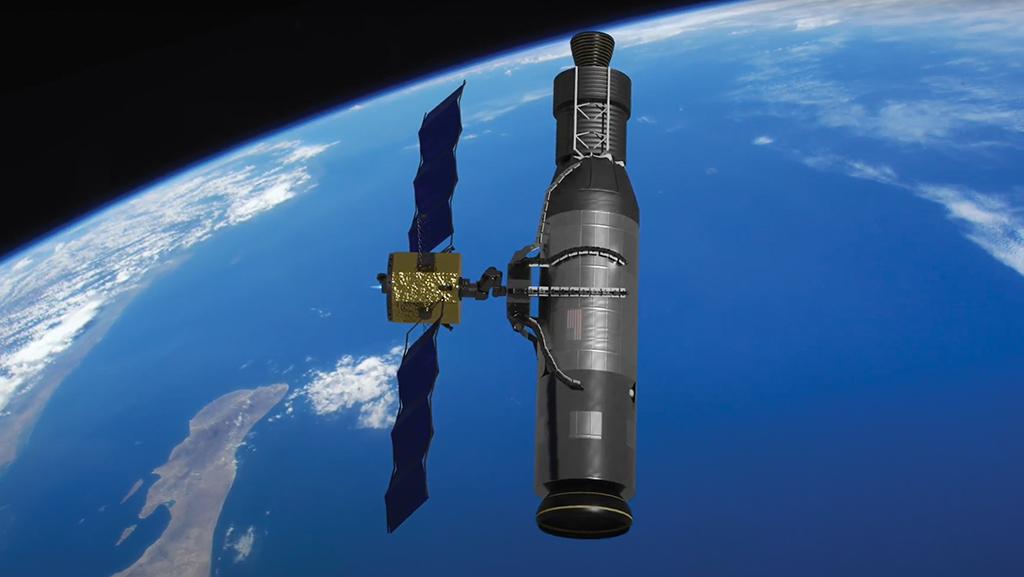This article is published in Aviation Week & Space Technology and is free to read until Jun 08, 2024. If you want to read more articles from this publication, please click the link to subscribe.

Reacch’s robotic arms use van der Waals forces to grip objects.
If all goes according to plan, a robotic octopus will be floating around and grabbing objects inside the International Space Station by year-end.
Startup Kall Morris plans to send the International Space Station (ISS) a set of robotic tentacles onboard a SpaceX Dragon cargo resupply capsule in September. The system is to be integrated onto one of the station’s Astrobees—cube-shaped robots that self-propel in microgravity using electric fans—and used to grab tumbling objects. If the demonstration succeeds, it might allow Kall Morris and its NASA and U.S. Space Force sponsors to wrap their arms around a bigger problem: space junk.
- Startup aims to demonstrate soft capture of tumbling space debris
- Spent upper-stage rocket bodies are plentiful targets for the Reacch system
Marquette, Michigan-based Kall Morris wants to show that its robotic tentacles can make a soft capture of an out-of-control object autonomously by wrapping around and gripping it with a mechanical arm linkage, which is covered by an adhesive.
Made by Gecko Materials, the adhesive grips surfaces using rows of microscopic wedges, similar to a gecko’s foot. The tip of each wedge is 1/100th the thickness of a human hair and uses van der Waals forces to hold on to objects, including those with smooth surfaces, explains the adhesive’s manufacturer. Van der Waals forces are weak, short-range electrostatic forces between neutral molecules or atoms that, among other things, allow geckos to climb walls.
The gecko-inspired adhesive attaches to a surface mechanically at a microscopic scale. It bonds better to an object than a chemical, which could outgas, or a suction system, which would not function in the vacuum of space, Kall Morris CEO and co-founder Troy Morris told Aviation Week at the Space Symposium in Colorado Springs in April. “These biomimicry adhesive tentacles give us the capability to adhere to an unprepared object,” he said.
The Astrobee drones on the ISS are to function as stand-ins for a future servicer spacecraft equipped with the robotic octopus arms, a system dubbed the reactive electro-adhesive capture cloth mechanism to enable safe grapple of cooperative/non-cooperative space debris (Reacch). Companies such as communications satellite operator OneWeb and space junk removal startup Astroscale are installing docking plates to allow a servicer spacecraft to remove a defunct satellite. But many debris objects—especially derelict upper-stage rocket bodies that have been tumbling through low Earth orbit for years—have no tow hitch. Grabbing hold of these out-of-control, difficult-to-grasp pieces is tricky.
Kall Morris aims to show it can capture that sort of space junk—as well as satellites in need of service and even adversaries’ spacecraft—using a delicate touch that does not create new debris. If the ISS demonstration proves successful, the company wants to rendezvous with and capture space debris in 2026 using a larger version of Reacch attached to its MK1 Laelaps spacecraft.
The full-size Reacch payload, to be carried on the Evolved Expendable Launch Vehicle Secondary Payload Adapter-class Laelaps, would have eight arms, each slightly under 1 m (3.3 ft.) in length. With eight arms, and 10 linkages hosting a gecko tile on each member, the system would have at least 80 points of contact, allowing it to grapple a wide variety of shapes and surfaces, CEO Morris said. The company calculates that could include objects between 250 mm (0.8 ft.) and about 6.5 m in diameter.
Kall Morris sees no shortage of potential business with decades’ worth of spent upper-stages circling the Earth and thousands of satellites to be launched in the coming years.
“The sun-synchronous orbit seems to be the hot spot of American debris objects,” Morris said at the Space Symposium. “Our advantage is being able to go after past objects as well as anything in the future.”





